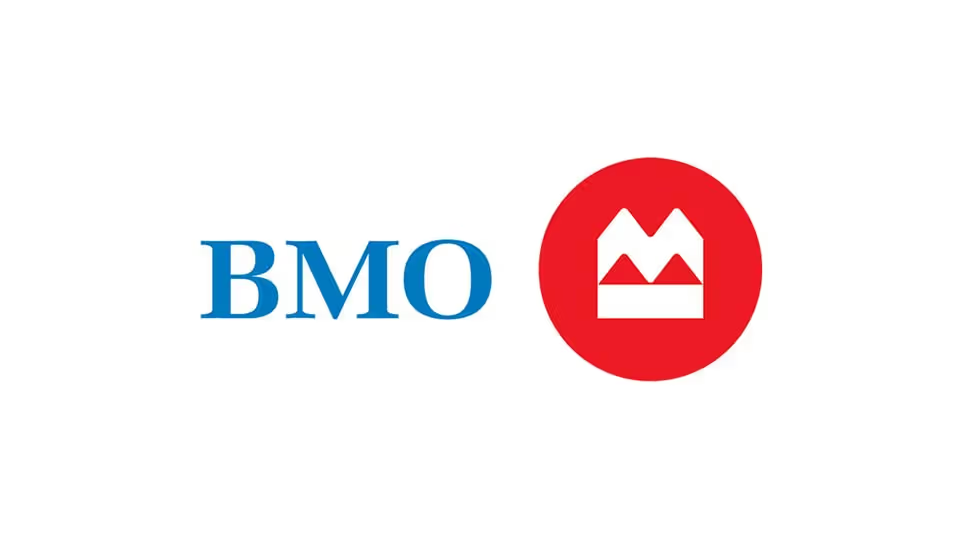New Opportunities for HISA ETF Holders
While high interest savings account (HISA) ETFs have largely flown under the radar since their inception in Canada close to 10 years ago, interest rate spikes over the last year have landed these products in the investment spotlight for the first time.

While high interest savings account (HISA) ETFs have largely flown under the radar since their inception in Canada close to 10 years ago, interest rate spikes over the last year have landed these products in the investment spotlight for the first time.
And why not? HISA ETFs offer a risk-free portfolio of bank accounts spread across several institutions. They are liquid and flexible, and come with competitive annualized distribution yields in excess of the overnight rate and recent money market yields, which were 5% as of January 2024. That makes these funds an ideal vehicle for investors who want to park their cash until smoother markets prevail.
Today, HISA ETFs have attracted almost C$30 billion in assets and make up between 7% and 8% of the entire ETF market. (Source: National Bank ETF Report, January 2024).
Banks have been offering traditional access to HISA accounts for many years. These accounts attract “sticky money”; deposits made by retail investors that are likely to sit in an account for an extended period of time. This structure has enabled banks to easily lend out those deposits and earn a premium on these loans.
The innovation of providing access to these accounts via ETFs has been a boon for investors, but it has also caused regulators to evaluate how banks lend these deposits out going forward.
OSFI, the Office of the Superintendent of Financial Institutions, conducted an industry-wide consultation this year to determine if HISA ETFs posed a risk to the overall financial system. Given the vast sum of funds invested in these products, they determined that it did. Their concern centered around an unlikely scenario, where a quick drop in assets could create a liquidity issue for the institutions loaning out these cash reserves.
To remedy this concern, OSFI decided that investments in HISA ETFs should be treated as wholesale funding, not retail deposits. This means the capital accumulated from these funds cannot be lent out without banks amassing appropriate collateral.
The significance of this ruling will have an immediate impact when new OSFI regulations kick in on January 31st, 2024. As a result, HISA ETFs will no longer be able to pay a premium for the deposits they collect, causing a drop in yield that is expected to be about half a percent.1
But there is no need for panic. HISA ETFS will maintain their cash-like characteristics. The only thing that will affect investors is the yield they receive on these ETFs, not liquidity. Still, investors who want to maximize yields while maintaining a similar risk profile and liquidity will now be forced to look elsewhere. This will bring two main opportunities into play: money market ETFs, and ultra short-term bond ETFs.
Money market funds have been a go-to product for investors looking to park cash outside of the equity market since the early 1990s. They consist of short-term debt securities such as treasury bills, commercial paper, and certificates of deposits. BMO ETFs offer investors the BMO Money Market Fund ETF (ZMMK) with a yield that is expected to be 25 to 30 basis points above the over night rate and expected HISA ETF yield once the new regulations take effect at the end of January, assuming current rates and credit spreads hold.
The other option investors can consider is the BMO Ultra Short-Term Bond ETF (ZST). This bond fund offers an additional upside potential of about 25 basis points over traditional money market funds, (if current credit spreads and rates hold), with a slightly elevated risk. It consists of corporate bonds issued by high-quality companies like the banks and telcos. Each bond matures within a year, further diminishing the unlikely risk of a default.
In addition to the interest these ultra short-term bond funds provide, they offer the potential of capital appreciation, which generates capital gains taxed at more favourable rates when held within a non-registered account. Together, these factors can help generate a highly competitive yield.
Ultra short-term bond ETFs such as ZST have an added benefit for those holding these ETFs in non-registered accounts. Many of the bonds held in these ETFs are discount bonds, meaning they are trading below par value. However, because the bonds mature in less than a year, they will be pulled to par value within by that time, creating an element of capital gains in the ETF portfolio. This in turn creates a more tax efficient distribution for taxable accounts.
It should be noted that most income received from HISA ETFs and Money Market ETFs is taxed as interest income.2
The BMO Money Market Fund ETF (ZMMK) and BMO Ultra Short-Term Bond ETF (ZST) can be purchased like any other ETF, either from your online direct investing account, or through your advisor. To learn more, visit https://www.bmogam.com
Disclaimer:
1TD Securities, October 2023. 2 Please consult a tax professional with respect to any circumstance.
Annualized Distribution Yield: This yield is calculated by taking the most recent regular distribution, or expected distribution, (excluding additional year end distributions) annualized for frequency, divided by current NAV. The yield calculation does not include reinvested distributions.
ZMMK’s performance as of December 31 2023: 1 month 0.44%, 3 month 1.32%, 6 month 2.59%, 1 year 4.97%, since inception annualized 3.32%.
ZST’s performance as of December 31 2023: 1 month 0.46%, 3 month 1.54%, 6 month 2.84%, 1 year 5.32%, 3 year annualized 2.22%, 5 year annualized 2.17%, 10 year annualized, 1.80%, since inception annualized 1.91%.
To read OSFI’s full report on the updated liquidity requirements for HISA ETFs, click here.
Commissions, management fees and expenses all may be associated with investments in exchange traded funds. Please read the ETF Facts or prospectus of the BMO ETFs before investing. The indicated rates of return are the historical annual compounded total returns including changes in unit value and reinvestment of all dividends or distributions and do not take into account sales, redemption, distribution or optional charges or income taxes payable by any unitholder that would have reduced returns. Exchange traded funds are not guaranteed, their values change frequently, and past performance may not be repeated. For a summary of the risks of an investment in the BMO ETFs, please see the specific risks set out in the BMO ETF’s prospectus. BMO ETFs trade like stocks, fluctuate in market value and may trade at a discount to their net asset value, which may increase the risk of loss. BMO ETFs are managed by BMO Asset Management Inc., which is an investment fund manager and a portfolio manager, and a separate legal entity from Bank of Montreal.
Distributions are not guaranteed and are subject to change and/or elimination. Distributions are not guaranteed and may fluctuate. Distribution rates may change without notice (up or down) depending on market conditions. Distribution yields are calculated by using the most recent regular distribution, or expected distribution, (which may be based on income, dividends, return of capital, and option premiums, as applicable) and excluding additional year end distributions, and special reinvested distributions annualized for frequency, divided by current net asset value (NAV). The yield calculation does not include reinvested distributions. Distributions are not guaranteed, may fluctuate and are subject to change and/or elimination. Distribution rates may change without notice (up or down) depending on market conditions and NAV fluctuations. The payment of distributions should not be confused with the BMO ETF’s performance, rate of return or yield. If distributions paid by a BMO ETF are greater than the performance of the investment fund, your original investment will shrink. Distributions paid as a result of capital gains realized by a BMO ETF, and income and dividends earned by a BMO ETF, are taxable in your hands in the year they are paid. Your adjusted cost base will be reduced by the amount of any returns of capital. If your adjusted cost base goes below zero, you will have to pay capital gains tax on the amount below zero. Cash distributions, if any, on units of a BMO ETF (other than accumulating units or units subject to a distribution reinvestment plan) are expected to be paid primarily out of dividends or distributions, and other income or gains, received by the BMO ETF less the expenses of the BMO ETF, but may also consist of non-taxable amounts including returns of capital, which may be paid in the manager’s sole discretion. To the extent that the expenses of a BMO ETF exceed the income generated by such BMO ETF in any given month, quarter, or year, as the case may be, it is not expected that a monthly, quarterly, or annual distribution will be paid. Distributions, if any, in respect of the accumulating units of BMO Short Corporate Bond Index ETF, BMO Short Federal Bond Index ETF, BMO Short Provincial Bond Index ETF, BMO Ultra Short-Term Bond ETF and BMO Ultra Short-Term US Bond ETF will be automatically reinvested in additional accumulating units of the applicable BMO ETF. Following each distribution, the number of accumulating units of the applicable BMO ETF will be immediately consolidated so that the number of outstanding accumulating units of the applicable BMO ETF will be the same as the number of outstanding accumulating units before the distribution. Non-resident unitholders may have the number of securities reduced due to withholding tax. Certain BMO ETFs have adopted a distribution reinvestment plan, which provides that a unitholder may elect to automatically reinvest all cash distributions paid on units held by that unitholder in additional units of the applicable BMO ETF in accordance with the terms of the distribution reinvestment plan. For further information, see the distribution policy in the BMO ETFs’ prospectus.
Any statement that necessarily depends on future events may be a forward-looking statement. Forward-looking statements are not guarantees of performance. They involve risks, uncertainties and assumptions. Although such statements are based on assumptions that are believed to be reasonable, there can be no assurance that actual results will not differ materially from expectations. Investors are cautioned not to rely unduly on any forward-looking statements. In connection with any forward-looking statements, investors should carefully consider the areas of risk described in the most recent simplified prospectus. This article is for information purposes. The information contained herein is not, and should not be construed as, investment, tax or legal advice to any party. Particular investments and/or trading strategies should be evaluated relative to the individual’s investment objectives and professional advice should be obtained with respect to any circumstance. The viewpoints expressed by the author represents their assessment of the markets at the time of publication. Those views are subject to change without notice at any time. The information provided herein does not constitute a solicitation of an offer to buy, or an offer to sell securities nor should the information be relied upon as investment advice. Past performance is no guarantee of future results. This communication is intended for informational purposes only. ®/™Registered trademarks/trademark of Bank of Montreal, used under licence.

FULL DISCLOSURE: BMO is a client of BTV-Business Television. This article does not constitute investment advice. Each reader is encouraged to consult with his or her individual financial professional. Any action taken as a result of reading information here is the reader’s sole responsibility.
You might also like



.png)


